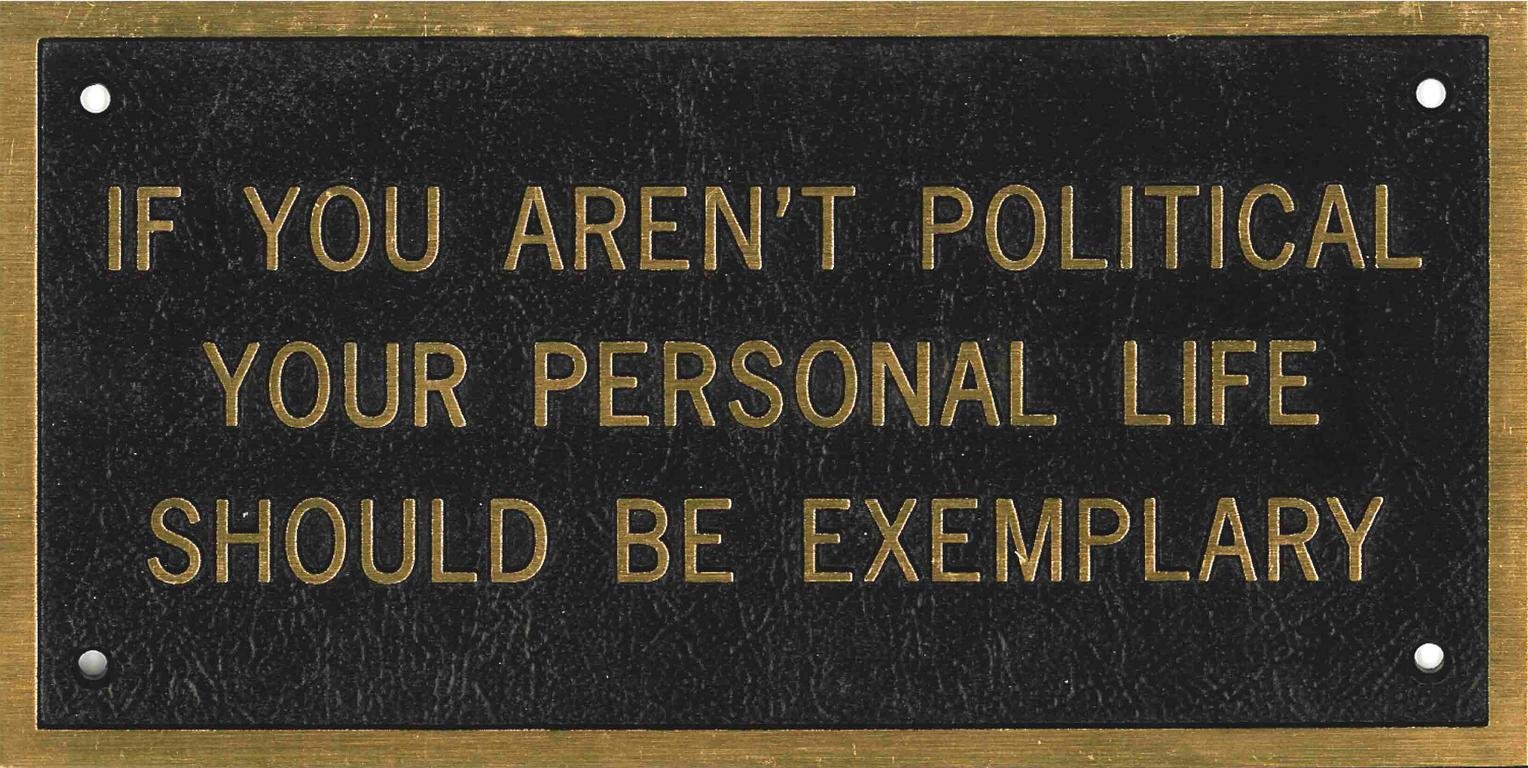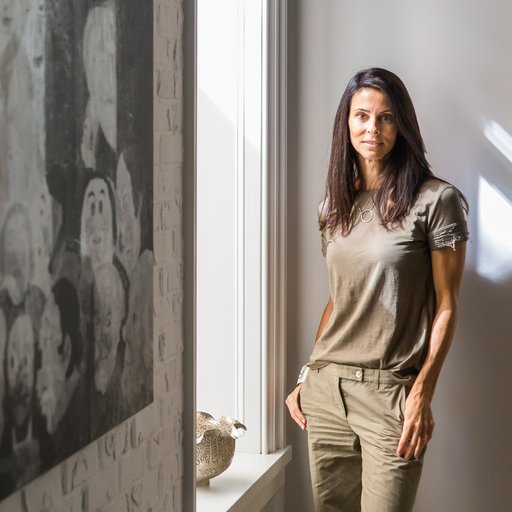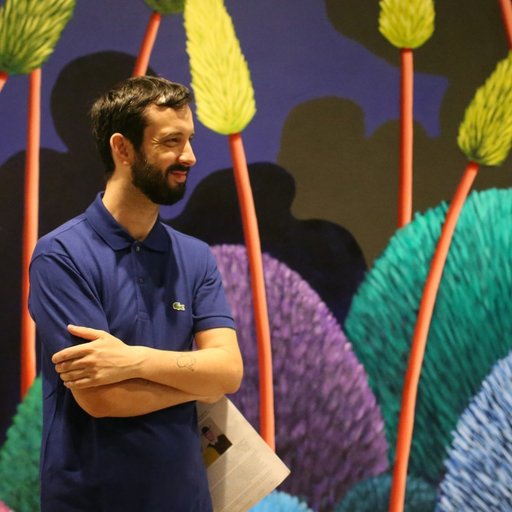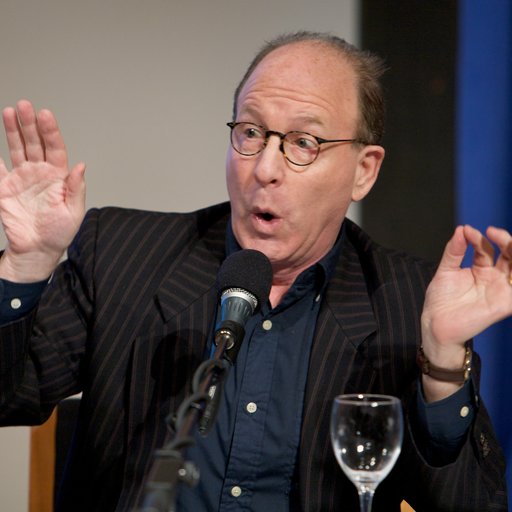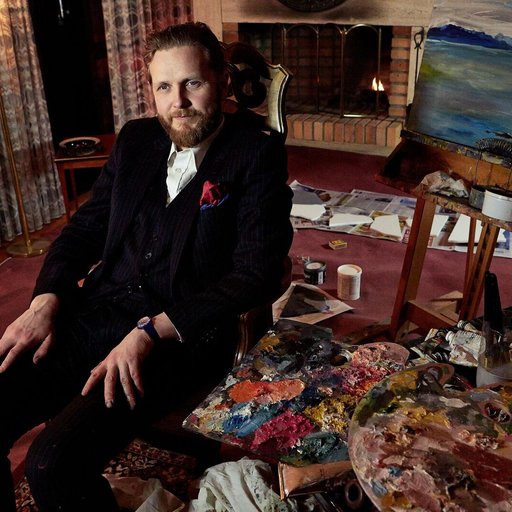“If you aren't political your personal life should be exemplary,” reads one of Jenny Holzer ’s more challenging “Truisms,” and since emerging on the scene in the 1970s the artist has used her concise, incisive virtuosity with language to create political sparks of all sorts—the kinds of electrical currents that force the viewer to reexamine their fundamental assumptions, and principles. Now, Holzer is putting her declarative prowess behind the candidacy of Hillary Clinton , uniting with the Democratic presidential campaign to create viral videos that can spread Clinton’s inspiring words through the power of art.
The videos—one variety of which shows a quote being digitally projected along the façade of the White House, the other appearing as nearly hypnotic animations of the quotes flying out toward the viewer—are not your typical Clinton campaign messaging, to say the least. (By the end of the campaign, Clinton will have spent roughly $200 million on megawatt ads drawing in every authority from her husband to the voice of god, otherwise known as Morgan Freeman .) But Holzer is hoping they will at least do some small part in electing the first female American president, and halting the ambitions of one Donald Trump .
To find out the story and strategy behind the unique collaboration, Artspace editor-in-chief Andrew M. Goldstein spoke to Holzer about how it came about, how artists can be effectively political, and the other cause she has been involved with recently, the New York City AIDS Memorial .
Recently, you did a collaboration with the Hillary Clinton campaign, where you took inspiring quotes from the former secretary of state on the topic of women’s rights and animated them into striking video works. How did that project come about?
The truth is it pretty much came out of the blue, as many things do, and I was glad of it when it came. I had been awake too late too often in Europe watching the debates, and so I’d like to be of some assistance. Also, I’m all for women’s rights, as you might imagine. [Laughs]
How did you transform them into art?
There were two sorts of works. The first ones were faux light projections, like my regular projections but this time on the front of the White House with three Clinton quotes. And these have white light, as the projections tend to do. It’s appealing-looking and processional and dignified, I hope. And the other ones are hyperactive animations for handhelds and screens that I began to practice when we did an anti-gun-violence project for Vogue.com. They’re spunkier, and maybe a little equivalent to a rally.
For the projections, why did you opt for faux, digital projections rather than the real thing?
We have managed to project from the back of the Kennedy Center onto Theodore Roosevelt Island before, but not onto the White House.
The quotes you used are very powerful: “I believe that the rights of women and girls is the unfinished business of the 21st century,” “When women participate in peacemaking and peacekeeping we are all safer and more secure,” and “To me you cannot be fully human fully civilized unless you recognize humanity in everyone.” How did you land upon those passages?
We were given a number of quotes, and I looked through and tried to imagine what would look best on the front of the White House. I liked all the quotations, but some seemed more accessible and clearer than others. So we narrowed the selection to three, and animated them, and, you know, made the fountain work. Key stuff like that. It’s her work, it’s her words. I made them jump around a little bit, and glow.
The quotes are obviously tremendously relevant in this political moment. Not only is Clinton making history as the first woman to run on a major presidential ticket, but women in general have become a flash point in the election thanks to Donald Trump’s rhetorical attacks and alleged sexual assaults against women. This contest has polarized the country tight down the middle, and a little while ago, there were news reports recently that female Trump supporters were even conceptually in favor of giving up the 19th amendment guaranteeing a woman’s right to vote if they thought it would ensure a Trump victory—even if such a thing would be impossible. How is it possible that the sentiment of “women’s rights are human rights and human rights are women’s rights,” as Clinton also said, is still something that needs to be defended?
I’m trying to think of a better word than “shocking.” It is horrifying that it’s still an issue in the United States, or anywhere else in the world. It’s persistent. I thought when I escaped from the ‘50s as a little kid that things would get progressively better, and get fixed. I’m astonished that they’re not fixed. Yeah, I can go on, and on and on. I’ve been awake for nights watching the criminal mayhem from Trump. I had some hope that, because he’s behaving so egregiously, that there will be a good result. Is that delusional?
I certainly hope not.
What he’s doing is so bad that it will change things. It also disturbs me profoundly that Giuliani’s justification for it was, “Well, everybody does it!” And he’s right—way too many men do it—but that doesn’t make it fine or dandy. I was gratified to see that any number of professional athletes have come out and said, “Not in my locker room!” That was kind of good, right?
It’s kind of extraordinary the way that the Trump campaign has tried to normalize patently outrageous things, like that “Access Hollywood” tape, through feints of mitigating language. “Locker-room talk,” for instance, or Trump’s trump card for everything: “I think the big problem this country has is being politically correct.” As an artist, language is your domain. How have you seen it been deployed in this election?
When it comes to messing with language, I wish he could finish a sentence and make coherent utterances. [Laughs] He messes with language structurally, right? It’s not a very subtle warping. But it’s maybe too predictable that I’m worried about Trump. I would like him to go away. For the sake of the ladies, man!
Seriously. Of all the non-white-male constituencies Trump has actively alienated, what more sympathetic quote-unquote “minority” could he have chosen to so malign, from his actions to his comments about women’s appearances?
We already have it bad enough! How many cents on the dollar do we get paid for working the same job? And they just came out that girls do 40 percent more chores than little boys. We could go on.
You are famously a master of the aphorism, and it’s funny that aphoristic speech has taken center stage in this election because of the way Trump has been leading the new cycle with his use of Twitter. His tweets, full of exclamation marks, hyperbole, and massive overgeneralization, have changed the rules of how political speech can be rendered. Bad! What do you see when you see those Tweets, from a language point of view?
I see that Orwell’s right, and very smart—don’t you? He saw it coming from miles away and mocked it. You know, not everything can be handled in a Tweet, nor should it be. That’s why I don’t Tweet. I’m not @jennyholzercat or @jennyholzermom. I didn’t even put my stuff out, somebody else did.
Wait, you mean the @jennyholzer Twitter account isn’t you? I’ve been following it, and it’s fun to try to sift through the tea leaves to try to see what event prompted a particular aphorism to be trotted out.
It’s not me! Somebody else did it. Somebody used my stuff, but I didn’t do it.
Ah… I see now that the account doesn’t have that all-important green Twitter checkmark.
Isn’t that kind of funny? Regretfully, somebody told me who it was, but it’s not yours truly. Sorry. [Laughs] We could pretend.
Well, at the very least, those tweets of your work prove that your old aphorisms sill have a kind of breaking-news, ripped-from-the-headlines quality to them. Does it strike you as odd that your statements have this continuing relevance—that you can just plop them in a news cycle and they seem to comment directly on it?
It’s kind of gratifying, in that I always wanted to be anonymous, and I guess this account is some kind of strange version of that. It’s a decent not-I. And I always imagined being hundreds of other people when I wrote them, so it’s of a piece.
And one of your aphorisms that comes to mind is, “Abuse of power comes as no surprise.”
Yeah, Donald, when you’re sneaking backstage on Teen Miss USA contestants, or the particularly gruesome talk to 10-year-olds, you know, “I’ll be dating one of you in 10 years.” You know, appalled that I can quote him now, or almost quote him.
Another place where your work finds an odd resonance with the election is in the barrage of Wikileaks revelations and the partial leak of Trump’s tax returns, since you have previously made paintings of formerly secret documents with blacked-out passages.
Well, I heard on the news that one of the documents Trump is citing as a Wikileaks document was actually a Newsweek article, which characterized as released secret information. I have tried to paint—or project, in some cases, as we did on the NSA or the library at NYU—documents that, as far as I can tell, are real. That seems like a good start, right?
So you actually vet the documents you use in your art rather than simply regurgitating them.
Seems like a good idea, if you’re going to bother to do all the stuff to make sure they’re real. Although, it was interesting—when we were doing the projections at NYU, a lot of the passersby assumed that the documents were my words, editorializing, as opposed to government documents about Guantanamo, for example. That was a curious thing that I didn’t anticipate.
As far as Wikileaks itself, the most notorious source of these kinds of released documents, what is your opinion?
I have read that, in some cases, it would have been better if more of the documents they have released had been redacted because they put any number of innocent people at risk for murder, or worse. I’m not in favor of murder, or worse. That gives me some hesitation. I often can’t tell which are real because, you know, they’re not on letterhead and so on and so forth.
I personally wonder why they’re being released against Clinton in a steady drip, now—that doesn’t seem entirely holy and neutral, you know? I’m not sure entirely what’s going on with that. Plus, it’s really a pseudo-scandal, because much of what has been released from Wikileaks has been characterized by Trump as a great and awful revelation, one after another, but what I’ve read seems to be kind of regular stuff. And not damning.
As a celebrated, prominent artist who is very effective with words, you would seem to be a natural person for a politician to collaborate with. Have you ever worked with a political campaign before?
No, I don’t think I’ve been useful to anybody. In fact I’m pretty sure I haven’t.
So, there are many artists who are now very concerned about the outcome of this election, but who haven’t gotten the call from the Clinton campaign and are wondering how they can help, or what they can do to actually have some kind of impact. Do you have any advice for how artists can best help stop Trump?
They can help with voter registration, and use their cars for taking people to the polls. If Warren Buffet can do it, certainly artists can too. If somebody has a great idea to execute something useful through art, bless them. Otherwise, help in the old fashioned way. Make calls, talk to your neighbor, assist the overtaxed and underfunded nonprofits that help people get to the polls, and get past any evil guard dogs at the polls.
Good advice. Make the art, drive the voters.
Try it both ways. Try it with art, and then try it with voter registration, would be my humble advice.
To segue a bit from your political-art project, another cause you’ve been involved with recently is the New York City AIDS Memorial , where you created a permanent artwork by engraving Walt Whitman’s Song of Myself into the memorial site. How did you come to be associated with this cause, too?
I came to New York in the late ‘70s and was there through the ‘80s, and that was the time . I worked in a restaurant in which two of my fellow waitpeople became sick and died shortly after our time together there. I knew any number of other people who became ill and passed away much too fast. My cohort wondered if we were going to die. I am forever sorry about how many people were lost, and I am worried to death about how many other people are sick and becoming infected.
What led you to choose Song of Myself , a great humanistic New York poem by a great gay New York poet, as the inscription?
How I came to the Whitman was courtesy of my friend and spiritual and otherwise adviser, the American poet Henri Cole. I was asking a couple of poets—I asked Anne Carson, too. “Oooh, what should we put here? I’m not worthy. I’m not up to task. Uh oh, this matters. What am I going to do?” I got wonderful suggestions from both and finally settled on Song of Myself because it was joyous and unashamed, not to mention beautiful. I thought the memorial can, would, should be serious—but, here’s to joyous and proud.
How did you array the words around the structure?
Painfully, and for forever. [Laughs]. Although we edited a bit of the poem, because some parts are not appropriate now—there’s some 19th-century stuff in there that would elicit a “yowch”—and also because we had thousands of characters to put in a spiral around the fountain that’s in the middle. So we had to not only fill the space, but we had to ensure that letters didn’t hit any of the joints between the pavers. So, to make sure no letters in the thousands hit any single joint, and make it a continuous spiral? It was a graphic challenge, mildly put.
So, is the viewer intended to read the poem, circling around the memorial to follow the text?
Yep. If you want to be dizzy, you can walk around and around. But, courtesy of Whitman, almost any portion is fantastic as a little chunk, so if you’re not inclined to punish yourself, most any position you stake there will be rewarded.
Why do you think it took so long for a memorial to the victims of AIDS to be installed in the city? It seems like it should have been done long ago.
It’s grievously sad that it took so long. It’s not completely surprising, though, if you think how much shame and stigma was originally attached, and then that was followed by so much grieving, which can, for a while, be enervating. But here’s to the people behind the memorial for making it happen, and to Walt for being proud and loquacious. He certainly has thousands of letters for us to tap.
There should be a Walt Whitman memorial in New York City as well, but this is a good compromise.
It’s a start.
[related-works-module]













